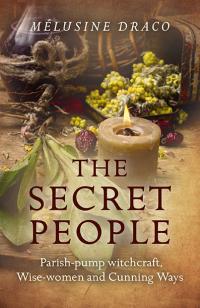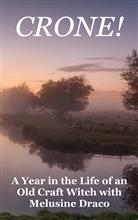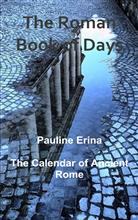
MARCH: Old English [OE] Hrēþ-mōnaþ ‘Month of the Goddess Hrēþ’ and was named in honour of a little-known fertility goddess names Hreða, or Rheda. Her name eventually became Lide in some southern English dialects, and the name Lide or Lide-month was still being used locally in parts of southwest England until as recently as the 19th century. Alternatively ‘Month of Wildness’ or in Old High German [OHG] Lenzin-mānod ‘spring month’. The Norsemen regarded the month as ‘the lengthening month that wakes the alder and blooms the whin [gorse]’ calling it Lenct – meaning Spring. It was a period of enforced fasting when winter stores were running low and as such was incorporated into the Church calendar and renamed Lent. The Anglo-Saxons referred to it as Lenetmonath
In the 14th century the misericord calendar carved into the backs of choir seats in St Mary’s Church at Ripple was shown as the time for sowing. The carvings reveal an annual round of country life in the Middle Ages and are believed to be by local craftsmen; they add up to a country calendar with religious overtones, showing the tasks of husbandry month by mouth. The tree representing March is the Alder, associated with Bran, the pre-Celtic raven god.
Alder Magic: With the alder’s natural habitat being streams and riverbanks it is not surprising that it can be viewed as being sacred to Elemental Water, although with its various associations, it seems to embrace all four elements. Pipes and whistles were made from alder, making it sacred to Pan and Elemental Air; whistles can be used magically to conjure up destructive winds – especially from the North (Elemental Earth). Associated with the Elemental Fires of the smith-gods (because although it burns poorly, it makes one of the best charcoals) it has the powers of both dissolution and regeneration. Primarily, the alder is the tree of fire, using the power of fire to free the earth from water and a symbol of resurrection, as its blooms heralds the drying up of the winter floods by the Spring Sun. Use alder as part of your magical workings at Spring Equinox
1st St David’s Day. The national day of Wales and has been celebrated as such since the 12th century. He was reputedly born on a cliff top near Capel Non (‘Non’s chapel’) on the South-West Wales coast during a fierce storm. Both his parents were descended from Welsh royalty: he was the son of Sandde, Prince of Powys, and Non, daughter of a chieftain of Menevia (now the little cathedral town of St David’s ). The site of his birth is marked by the ruins of a tiny ancient chapel close to a holy well, and the more recent 18th century chapel dedicated to his mother Non can still be seen near St. David’s Cathedral. St David is the only national saint in the British Isles to be ‘home-grown’.
There is doubt as to the origin of the custom of wearing a leek, but according to Welsh tradition, it is because St David ordered his Britons to place leeks in their caps that they might be distinguished from their Saxon foes. It has also been pointed out that this allusion by Fluellen (in Henry V) to the Welsh having worn a leek in battle under the Black Prince, is not necessarily confirmation that it originated in the fields of Crecy, but rather that it shows when Shakespeare wrote that Welshmen wore leeks. Today: Celebrate this national day of Wales by wearing the leek or a daffodil.
2nd The Feast of Ceadda (pronounced Kedda), an early Celtic deity associated with sacred springs and wells. Replaced in the Church calendar by Chad, a prominent 7th century Anglo-Saxon churchman who became abbot of several monasteries, Today: Make an offering at your local well or stream by clearing the winter debris.
10th The fourth Sunday in Lent in most Lancashire towns is called Simnel Sunday, and Simnel cakes – ornamental, rich cakes like those made at Christmas time – are eaten. A writer in The Gentleman's Magazine (1867) said: ‘from time beyond memory thousands of persons come from all parts to that town (Bury) to eat Simnels. Formerly, nearly every shop was open, with all the public-houses, quite in defiance of the law respecting the closing during ‘service’ …’ The origin of the word Simnel is unknown: in Wright’s Vocabularies it appears as Hic arlaecopus = symnelle – a form in use during the 15th century. In the Dictionarius of John de Garlande, completed in Paris in the 13th century, it appears as Simeneus = placentae = simnels. Today: An appropriate cake to celebrate the Ēostre spring festival.
15th The old Roman New Year actually began on the famous Ides of March, which was sacred to Jupiter and a day for special religious observance. Due to Shakespeare’s dramatic ‘Beware the Ides of March!’ in his play Julius Caesar, the day has developed sinister connotations. Today: Do as they did in Shakespeare’s day … watch the play!
Weather-lore: ‘A dry March and a wet May, fill barns and bays with corn and hay.’
15th The Roman Festival of Anna Perenna, an ancient deity whose feast day was at the full moon in what was then the first month of the year. Ovid describes her as ‘Anna ac Perenna’, or ‘she who begins and ends the year’. Today: An opportunity for an impromptu ‘old new year’ celebration or simply making an offering to your household gods.
17th Feast of St Patrick celebrates one of the world’s most popular saints. He was born in Roman Britain and when he was about fourteen was captured by Irish pirates during a raiding party and taken to Ireland as a slave to herd and tend sheep. He eventually escaped to Britain but returned, preaching and converting all over Ireland for forty years often using shamrocks to explain the Holy Trinity. Today: Celebrate this national day of Ireland.
17th Liberalia was celebrated in Rome in honour of the god of the vine as a great carnival; it was at this festival that Roman youths first assumed the toga virilise, or ‘manly gown’. This ancient Italian ceremony was originally a ‘country’ or rustic ceremony but the Roman State adaptation was meant to honor Liber Pater, an ancient god of fertility and wine, who was also a vegetation god, responsible for protecting seed. Liber, like Dionysus, had female priests although Liber’s priests were older women; wearing wreaths of ivy, the priestesses made special cakes, or libia, of oil and honey which passing devotees would have them sacrifice on their behalf. Possibly this was an older rite that was originally aligned with the Vernal Equinox. Today: An excellent opportunity to pay homage to the vine by offering a libation of a good English wine.
21st The Spring or Vernal Equinox – check on the Internet for precise alignments. As we’ve already noted, by 600AD the Sun was entering the constellation of Aries at the Spring Equinox and still marked the beginning of the year for the Roman calendar makers since Aries has always been recognised as the first sign of the year. These are powerful tides around the Vernal Equinox and often a time of great change. A good time for divination to see what the coming astrological year will bring.
22nd Attis Arbour Intrat: In Ancient Rome, the procession of the pine trees was dedicated to Cybele, Ops or Rhea, in what was known as the Festival of the Entry of the Tree; immortalised in music as Pini di Roma a four-movement tone poem which depicts pine trees in four locations in Rome - at different times of the day by the Italian composer Ottorino Respighi. Arbor intrat (‘The Tree enters’), commemorates the death of Attis under a pine tree. Today: Bring a pine bough into the home in recognition of the Great Mother.
22nd Also a Roman Dies violae – the ritual laying of flowers at ancestral tombs and so this is a good time to visit a grave or memorial of an ancestor of the blood, place or tradition and leave a tribute. There were several dates set aside for honouring the ancestors in the old calendar and not just at the beginning of winter (Hallowe’en or Samhain), since the ancestors could be approached with prayer and offerings to ensure the fertility of the land and livestock at any time. (See Flowering Sunday at the end of the month) Today: Place flowers on a family grave or pour a libation in an act of remembrance.
25th From 1252 until 1752 in Britain, the legal new year began not on 1st January but 25th March, which is still known as Lady Day and a date when many rents still fall due as it forms one of the ‘quarter days’. Today: End of the tax year!
Lady Day: It was said that if Easter fell on Lady Day then some disaster would shortly follow: ‘When my Lord falls in my Lady’s lap; England beware of some mishap.’
25th This day was also known as Latha na Caillich or Cailleach Day and a festival would be held to ‘drive out the winter hag’. Today: Light a fire outdoors and share a small feast of bread, cheese and wine in her honour.
Weather-lore: ‘As it rains in March, so it rains in June’.
25th Hilaria – a Roman festival of joy in honour of the goddess Cybele, mother of the gods, that ended a nine-day period of fasting when bread, pomegranates, quinces, pork, fish, and probably wine were prohibited. Only milk was permitted as a drink. The ancient festival was celebrated around the Vernal [Spring] Equinox in honour of the goddess, who had a long and extended historical journey from Anatolia to Rome, and then throughout the Roman Empire. Today: Perhaps this should be included in the current pagan calendar as the original ‘Mothering Sunday’ celebration.
26th The anniversary of the date of the service in which Richard III was finally laid to rest and ‘given dignity denied in death’ was Thursday 26th March 2015 in Leicester Cathedral, nearly 530 years after his demise. On 22nd August 1485, Richard was killed at Bosworth Field, the last English King to die in battle, thereby bringing to an end both the Plantagenet dynasty and the Wars of the Roses. Today: Light a candle in memory.
27-28th Lent: The fair season opens with the medieval Chartered mid-Lent fairs at Stamford and Grantham [Lincs], both held in the streets of the town. Stamford’s fair was chartered by King John in 1205 although the feast of the fair is not recorded; Grantham’s fair was chartered by Richard III in 1484 to be held on Passion Sunday. Today: Celebrate with all the fun of the fair!
29th Sad Palm Sunday (1463) marks the day of the battle of Towton, the most fatal of all the battles in the Wars of the Roses when over 37,000 Englishmen were slain. Drayton’s poem Polyolbion refers:
Whose banks received the blood of many thousand men,
On ‘Sad Palm Sunday’ slain that Towton field we call …
The bloodiest field betwixt the White Rose and the Red.
Today: Light a candle in memory.
https://www.feedaread.com/books/Old-Year-Old-Calendar-Old-Ways-9781788762052.aspx





 RSS Feed
RSS Feed